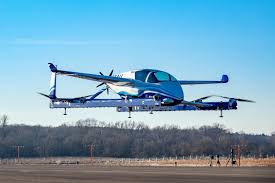
Breaking News
 Mike Rowe appears to be receiving flak for daring to explore the potential dangers of vaccines...
Mike Rowe appears to be receiving flak for daring to explore the potential dangers of vaccines...
 How to Keep Potatoes Fresh for a Year!
How to Keep Potatoes Fresh for a Year!
 A high school student has amazed the global science community with a discovery...
A high school student has amazed the global science community with a discovery...
Top Tech News
 The 6 Best LLM Tools To Run Models Locally
The 6 Best LLM Tools To Run Models Locally
 Testing My First Sodium-Ion Solar Battery
Testing My First Sodium-Ion Solar Battery
 A man once paralyzed from the waist down now stands on his own, not with machines or wires,...
A man once paralyzed from the waist down now stands on his own, not with machines or wires,...
 Review: Thumb-sized thermal camera turns your phone into a smart tool
Review: Thumb-sized thermal camera turns your phone into a smart tool
 Army To Bring Nuclear Microreactors To Its Bases By 2028
Army To Bring Nuclear Microreactors To Its Bases By 2028
 Nissan Says It's On Track For Solid-State Batteries That Double EV Range By 2028
Nissan Says It's On Track For Solid-State Batteries That Double EV Range By 2028
 Carbon based computers that run on iron
Carbon based computers that run on iron
 Russia flies strategic cruise missile propelled by a nuclear engine
Russia flies strategic cruise missile propelled by a nuclear engine
 100% Free AC & Heat from SOLAR! Airspool Mini Split AC from Santan Solar | Unboxing & Install
100% Free AC & Heat from SOLAR! Airspool Mini Split AC from Santan Solar | Unboxing & Install
 Engineers Discovered the Spectacular Secret to Making 17x Stronger Cement
Engineers Discovered the Spectacular Secret to Making 17x Stronger Cement
Boeing VTOL air vehicle prototype makes first flight

Known for now simply as the passenger air vehicle (PAV), the aircraft is part of the company's Boeing NeXt urban air mobility project. It's designed to fly autonomously, performing helicopter-like vertical takeoffs and landings, but switching over to faster and more efficient fixed-wing flight while en route.
It measures 30 feet long by 28 feet wide (9.1 by 8.5 m), and has a claimed battery range of up to 50 miles (80.5 km). Among other things, Boeing NeXt is also developing an electric cargo air vehicle (CAV), which can carry a payload of up to 500 lb (227 kg) – it made its first indoor test flight last year, with its outdoor testing scheduled to begin sometime this year.
This week's PAV flight was a test of the aircraft's autonomous functions and ground control systems, in which it successfully took off, hovered in place, and then landed. It was not carrying any passengers at the time. Subsequent flights are planned to evaluate its fixed-wing flight capabilities, along with its ability to smoothly transition between vertical and forward flight.

 Wall Street wants to go 24/7
Wall Street wants to go 24/7

